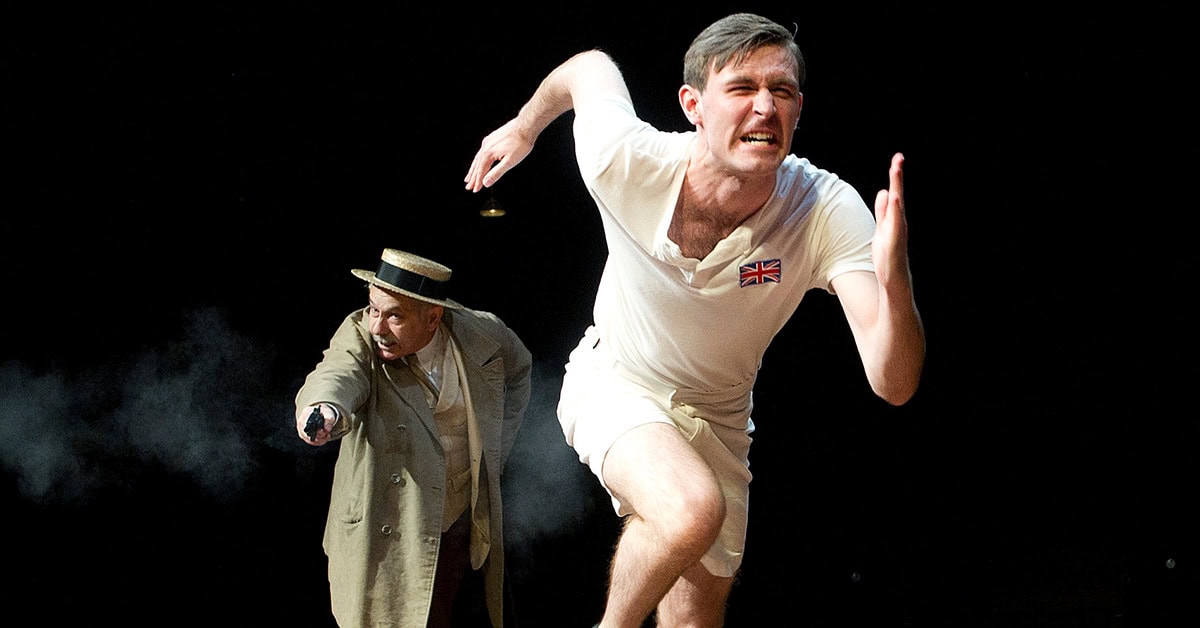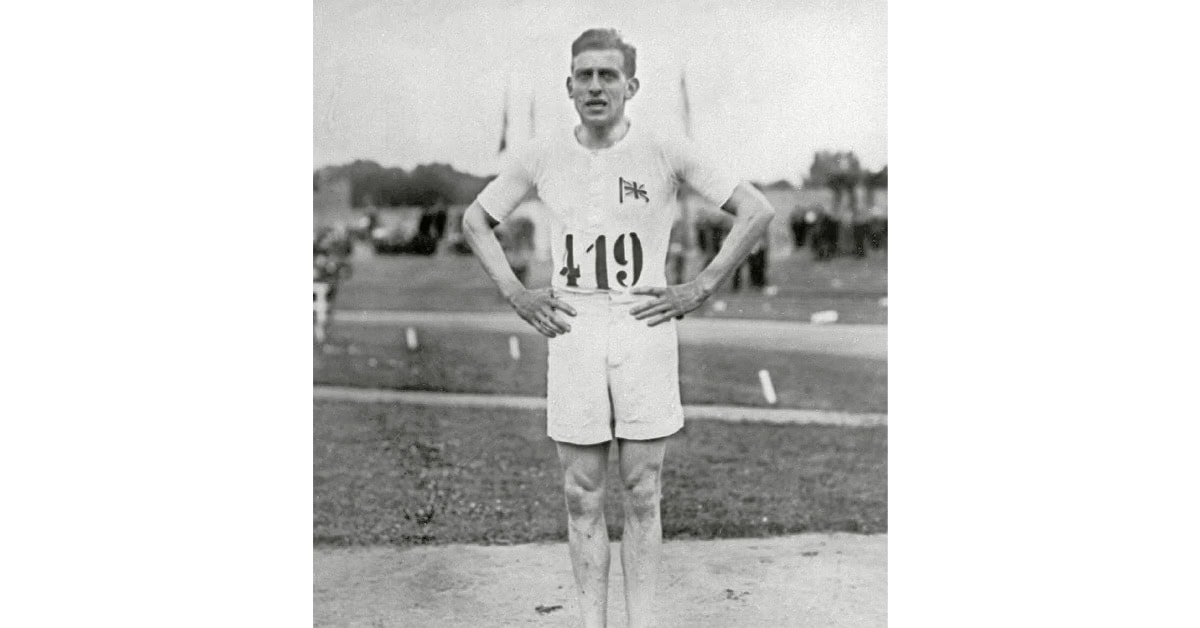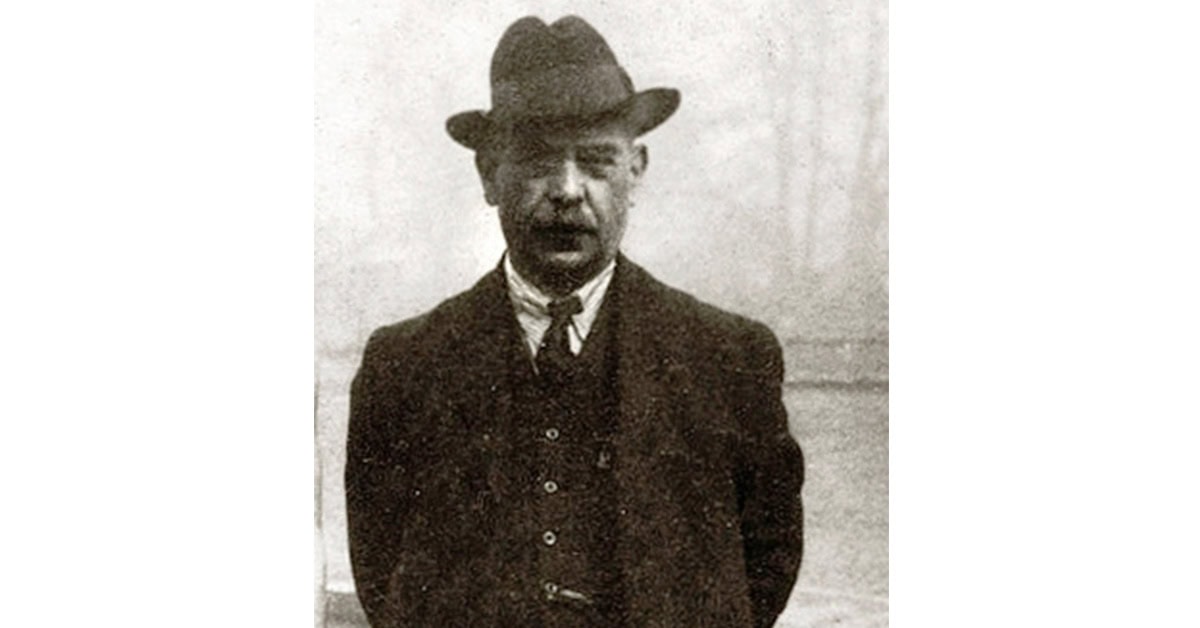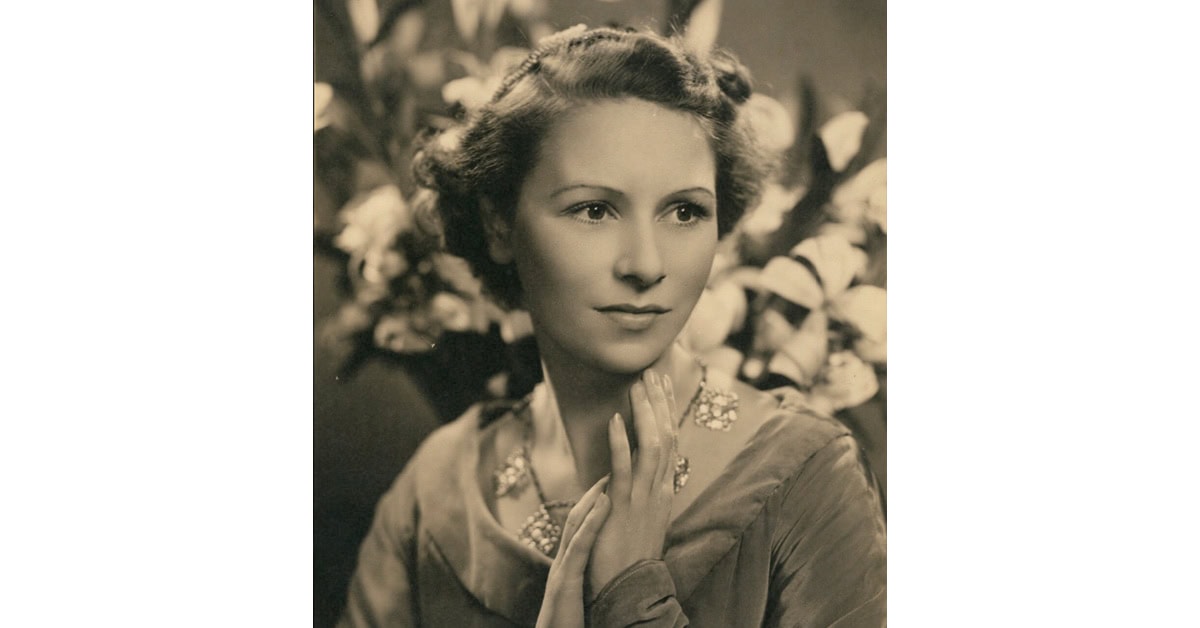
“To your marks! Get set… The gun is fired and they run.”
Step onto the tracks of the stadium where the 1924 Paris Olympics took place, and get soaked in the thundering cheers and support. Here’s a look at the real-life people celebrated in the stage adaptation of the 1981 film Chariots of Fire (US/UK), based on the extraordinary true story of Eric Liddell and Harold Abrahams, who travelled from Cambridge and Scotland to the monumental sporting events in Paris.
Eric Liddell

In the show:
Eric Liddell is portrayed as a man who stands firm for his religious belief, refusing to race on the Sabbath (the day of rest), despite his years of training and preparation for the monumental competition at the Olympics Games. He sacrifices his rugby playing career to focus solely on running. Described by the chairman of the Olympic Association, Lord Cadogan, as a ‘God-fearing young man of conviction’ for putting God first, then the nation, he runs in God’s name. Eric is also intelligent, kindhearted and open-minded.
In real life:
Eric Henry Liddell was the son of missionaries who lived and worked in China. He was born on 16 January 1902 in Tianjin, China. He attended Eltham College, Blackheath, a school in England for the sons of missionaries, where he captained both the rugby and cricket school teams. He was awarded the Blackheath Cup as the best athlete of his year. After he left school, Eric continued to play rugby and was capped for the Scotland international team seven times, while studying Pure Science at the Edinburgh University. He was dubbed ‘the Flying Scotsman’ for his incredible speed as a sprinter.
At the 1924 Paris Olympic Games, Eric dropped out of the 100-metre race due to religious practice, as the qualifying heats were scheduled for a Sunday. He then retrained for the 200 and 400-metre sprints instead. Subsequently he won the bronze medal in the 200-metre and the gold medal in the 400-metre, for which he broke the Olympic and World Record by finishing the race in 47.6 seconds. After the Games, he traveled to China (Tianjin and Xiaozhang) and worked as a teacher and missionary. Eric courted his future wife, Florence Mackenzie, by taking her for lunch to the Kiesling restaurant in Tianjin, rather than meeting at the Olympic Games as dramatised in the stage version. He was in an internment camp for two years before dying there in 1945. Eric’s grave in the garden behind the Japanese officers’ quarters was forgotten until it was rediscovered in 1989.
Harold Abrahams
 Credit: AP/REX/Shutterstock.com
Credit: AP/REX/Shutterstock.com
In the show:
Harold Abrahams’ primary purpose in running is to win the race, honouring his father, a Lithuanian Jewish immigrant who works hard to provide for his family. Harold is determined to prove himself to his peers, his seniors and the country, and to triumph over the discrimination that he has faced as a Jew. He’s the brother of the college’s famous runner, Adolphe, who broke several records. Off the track, he beats his friend Aubrey in a race for the heart of Sybil Evers.
In real life:
Four years before the 1924 Olympics, Abrahams represented Britain at the 1920 Olympics in Antwerp, Belgium. Apart from excelling in running, the athlete also competed in long-jump events. In order to focus on his running career, he hired a personal coach, Sam Mussabini. Abrahams even made an anonymous campaign to be removed from the long-jump competitions, where he had previously broken a British record and held it for 30 years. At the 1924 Olympics, he won the 100-metre race and set an Olympic record, finishing in 10.6 seconds. He became the first European to win an Olympic sprint title.
Abrahams unfortunately broke his leg in 1925 while practising the long-jump, which subsequently ended his sports career. He then became a practising barrister, The Sunday Times’ athletics correspondent and a radio broadcaster for the BBC. He also served as chairman of the British Amateur Athletics Board from 1968 to 1975.
Sam Mussabini

Credit: Getty Images
In the show:
Sam Mussabini is portrayed as a methodical coach in the play. He insists on being addressed as a ‘coach’ rather than a ‘trainer’. Under his previous name, Sam Wisdom, he wrote a book, The Athletic Trainer, a copy of which Harold keeps on his bookshelf at Cambridge. Mussabini has helped multiple athletes break records before he begins coaching Harold. At the Paris Olympics, he prefers to observe the race outside of the stadium to avoid causing distraction to the athletes.
In real life:
Scipio Africanus ‘Sam’ Mussabini was championed for his trailblasing approach to athletics. His athletes won a total of 11 medals (including five golds) in five Olympic Games as a result of his methodical and astute coaching style. Mussabini was appointed coach to the Polytechnic Harriers at the Herne Hill athletics track in 1913, where he trained Albert Hill, Willie Applegarth, Harry Edward, and his most celebrated student, the 14-year-old Harold Abrahams.
Mussabini consistently asserted that he was a coach rather than a trainer, characterising the latter as “a man who comes on with a bag and a little sponge.” He looked at every facet of his athletes’ training, nutrition and racing. He used a slow, deliberate approach to increase stamina, technique and fitness. Additionally, Mussabini made sure that more female athletes, such as Vera Palmer-Searle, who set three world records in sprint events in 1923 and 1924, received top-notch coaching.
Sybil Evers

Credit: National Portrait Gallery, London
In the show:
Sybil Evers first appears as a singer on a poster of the D’Oyly Carte, a British light opera company that specialises in staging Gilbert and Sullivan’s operettas. She is branded as a bright new star of the company. The poster captures the heart of Aubrey, whom Harold encourages to join the University’s Gilbert and Sullivan society. Sybil is portrayed as a loyal lover to Harold – she remains patient and encourages her lover to pursue his goal fearlessly. Her love of singing and involvement with the theatre are acknowledged in the play through occasional excerpts of Gilbert and Sullivan’s works.
In real life:
Sybil Marjorie Abrahams (née Evers) was a singer and actress. She performed in operettas, operas and plays in London from the early 1920s through the late 1930s. Evers only started performing with the D’Oyly Carte Opera Company from the 1930s. In 1934, she appeared as Ensemble in Regent’s Park Open Air Theatre’s first ever Romeo and Juliet production. In the same year, Abrahams performed in a children’s play, Ever So Long Ago, at the Cambridge Theatre in West End. It was reportedly the first play attended by Princess Elizabeth, the future Queen Elizabeth II. Evers met Harold around this time and not while he was still a student at Cambridge, as depicted in the play. Apart from her stage appearances, she was involved in productions of BBC radio and television. In the film version, Sybil Gordon is misidentified as the fiancée of Harold, who is also a singer involved with the D’Oyly Carte Opera Company.
Discover Chariots of Fire, this Olympic tale of hope, honour and belief, on the Concord Theatricals websites in the US or UK.

Newly Available for Licensing – December 2025 (US)

Newly Available for Licensing – December 2025 (UK)

